I'm not by nature someone who seeks out "extremes." That whole phase of the '90s just passed me by. But the reality of being a teacher means that most of my time to travel comes during the summer. So while I don't necessarily advise visiting Death Valley National Park in July, that was nonetheless the best opportunity for me to do so. And that's how I found myself in the driest and hottest spot in North America in early July.
The place certainly lives up to its reputation. The thermometer outside the visitor center read 128 degrees when I arrived. What does that feel like, you might be wondering? I saw KISS once at a football stadium. They shot jets of flame into the air regularly throughout the show, and even though I was on the second level I could feel them every time. Getting out of the car in Death Valley must have been what it felt like to be in the front row of that concert when the pyro went off.
The vegetation I saw didn't look especially vibrant. But that's not all that surprising in a place that gets less than two inches of rainfall a year.
Speaking of things that aren't surprising, I didn't have to worry about traffic too much when taking this shot. I wasn't the only one in the park, but I certainly wouldn't call it crowded, either.
If I were naming things in the park, I'd likely put the name "Devil's" in front of a lot of them, too.
That said, somehow the arrow weed here was actually somewhat green! Likely some sort of supernatural involvement at work.
The sunset itself wasn't especially dramatic, but that didn't prevent me from savoring it.
I did stop at the sand dunes, but not until after sunset. I've grown to love the colors of twilight, and I was curious how they would work together with the textures of the sand.
As it turned out, they complement each other quite nicely.
The shreds of cloud over Tucki Mountain caught the last vestiges of the setting sun -- wisps of cotton candy floating in the sky.
The temperature by now had cooled to a brisk 118 degrees. I thought the dry air would lose heat more rapidly once the sun went down, but that was not the case. Fortunately, I had booked a room in The Ranch at Death Valley for the night. Air conditioning, Wi-Fi, and a shower seemed like better options than tossing and turning in my own sweat.
Related Links:
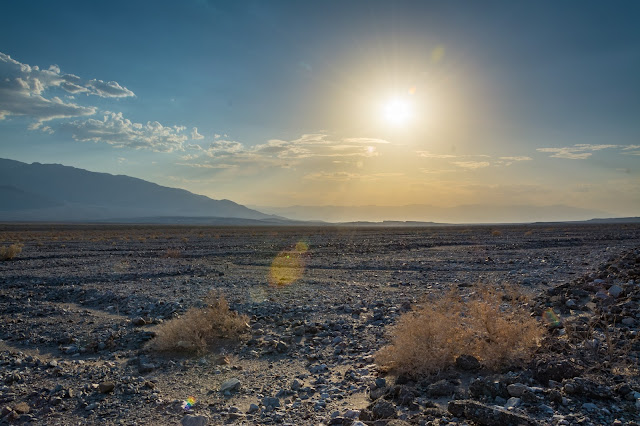

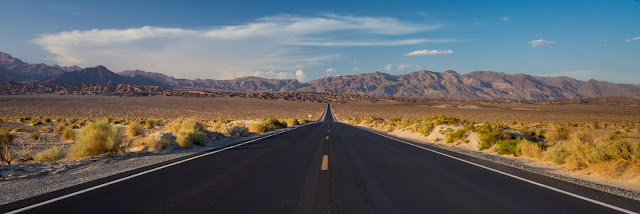
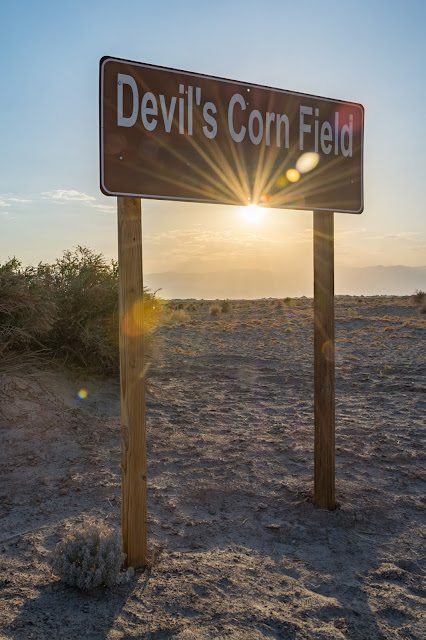

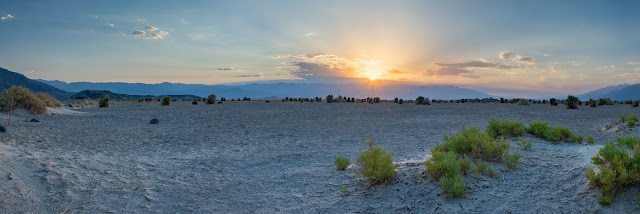
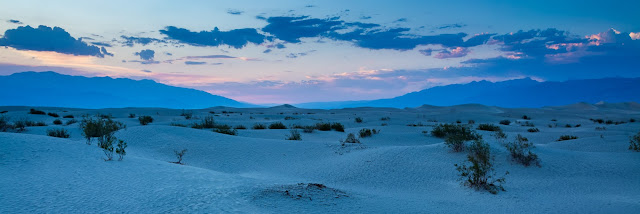
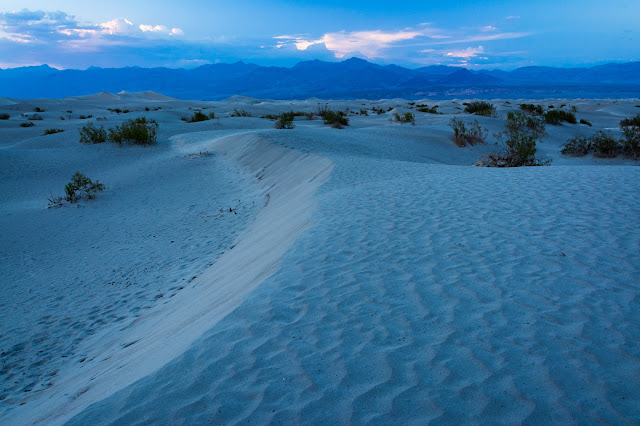

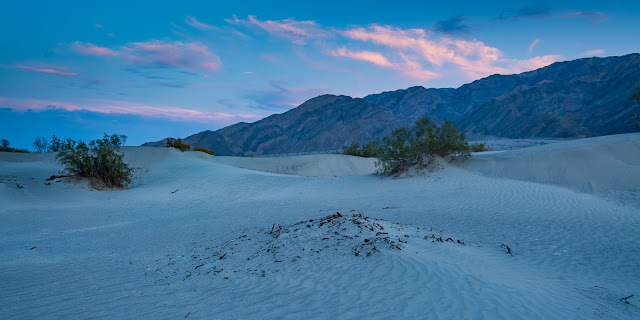
2 comments:
Beautiful photography, entertaining prose.
Thanks, Greg! I strive for both. :)
Post a Comment